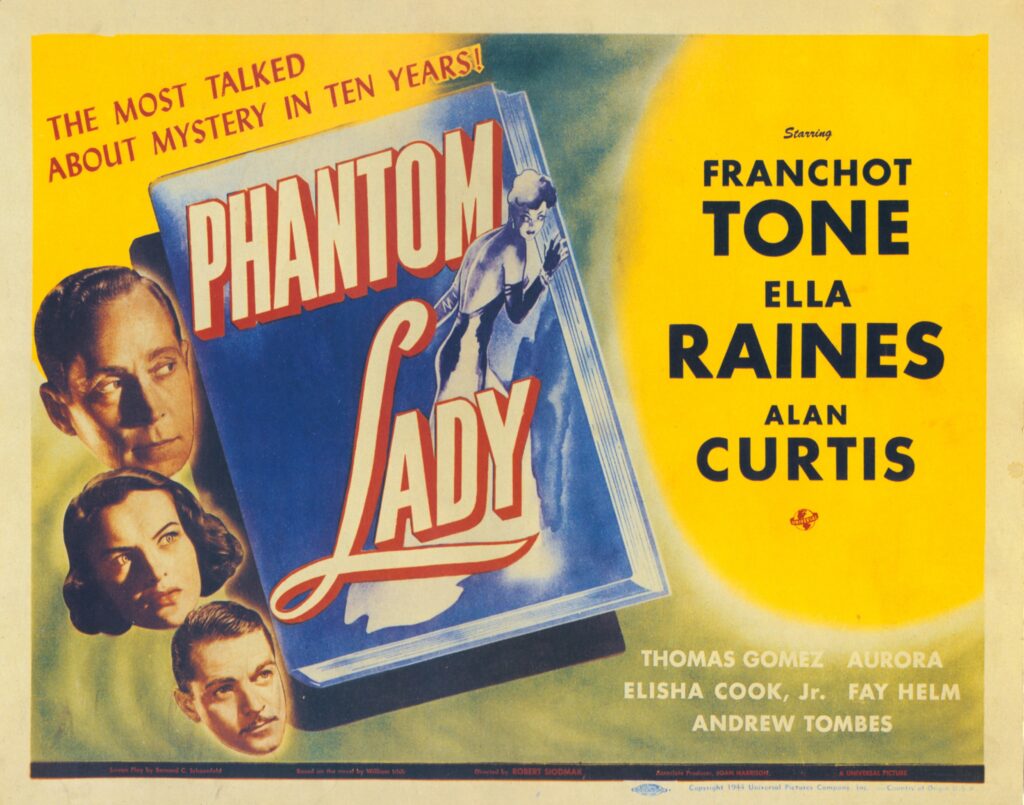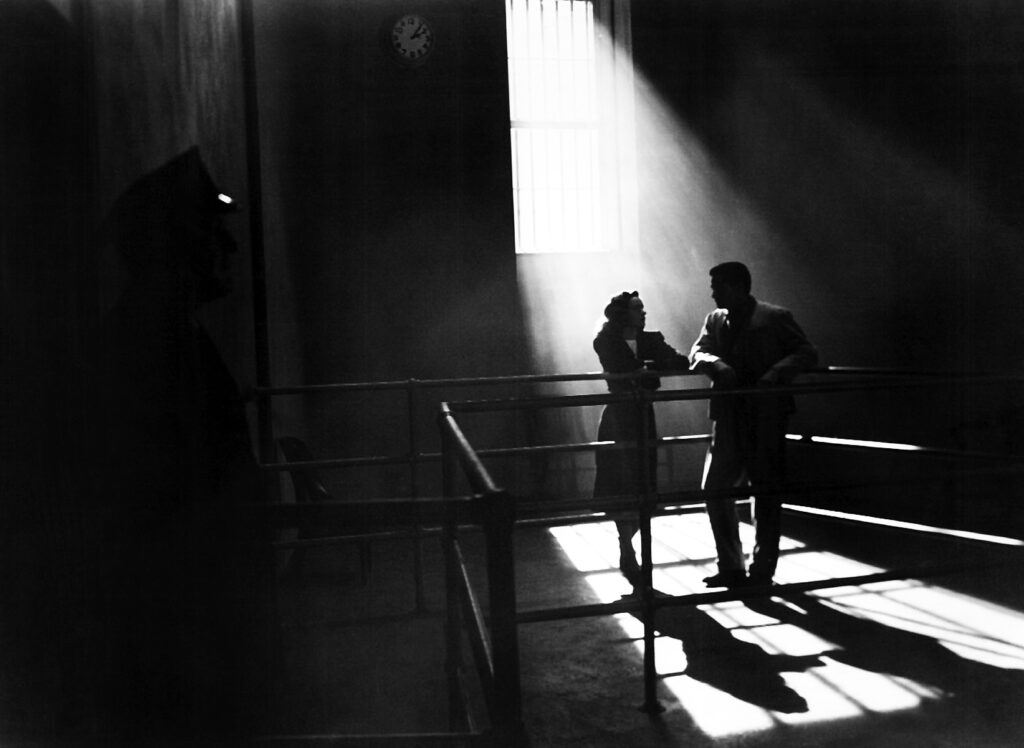This was written as the introduction for the Mesilla Valley Film Society’s screening of Phantom Lady in May, 2024.
1944 was a great year for noir — you had Otto Preminger’s Laura; George Cukor’s Gaslight; Billy Wilder’s Double Indemnity, to name a few — so it’s easy to understand when a picture worthy of consideration gets shuffled to the side, even when it’s as good as tonight’s feature, Phantom Lady.
Phantom Lady is one of those movies that really benefits from knowing as little as possible before going in, so I’m going to spare you any analysis or plot details up front. Just know that a man, played by Alan Curtis, has a fight with his wife and ends up taking a woman he meets at a bar to a show in her stead. This sets off a chain of events that ends up with that man on death row and his loyal secretary trying to figure out what happened. It’s gripping to say the least, taking the source material from genre stalwart Cornell Woolrich and elevating it through creative camerawork, great performances, and some hot jazz.

It’s the first film produced by Joan Harrison, a natural extension of her work as screenwriter and collaborator with the great Alfred Hitchcock. Starting as his secretary she soon became a trusted member of his inner circle, providing research and contributing to the screenplays of movies like Jamaica Inn as she learned the ropes of film production. She moved to the states with Hitch and his wife Alma in 1939 and would go on to help write Rebecca, Foreign Correspondent, Suspicion and Saboteur.
Phantom Lady represented her taking what she learned in her time with Hitch and applying it to the leaner, more budget-friendly noir style. After making a few other movies, she’d return to the Hitchcock fold with as producer of Alfred Hitchcock Presents, a show that proved that visually interesting, well-made television didn’t need to cost a fortune.
Phantom Lady was the first noir directed by Robert Siodmak. Siodmak’s an interesting cat, a German director who fled the Nazis — Joseph Goebbels himself talked trash about his film The Burning Secret — and found himself in France in 1933. France was a fantastic place for the 33-year old filmmaker; he got to collaborate with some greats like Maurice Chevalier and Erich von Stronheim white tackling a wide variety of genres. Of course, that’s until the Germans did what they did at the time, and he found himself in Hollywood in 1939 along with his brother and frequent collaborator Curt.

After Phantom Lady, noir would dominate his filmography for the rest of the decade. The same year, he helmed The Suspect (also starring Ella Raines, this time opposite the powerhouse Charles Laughton), 1945 saw Siodmak teaming up with Raines and producer Joan Harrison again, this time with Zero Mostel in the woefully underrated The Strange Affair of Uncle Harry, followed by The Killers, The Dark Mirror, Time Out of Mind, Cry of the City (a movie that single handedly made me revise my opinion of Victor Mature), Criss Cross, The Great Sinner, The File on Thelma Jordan and Deported.
So, that’s it. A first-time producer, a director taking on a genre that would define him in many film nerds’ eyes, Ella Raines as a character you’ll fall in love with, a top-billed actor who doesn’t show up until 45 minutes into the movie, and, of course, Elisha Cook Jr.
Enjoy Phantom Lady and come back next month for Sam Fuller’s Underworld U.S.A, starring Cliff freakin’ Robertson.
Leave a Reply